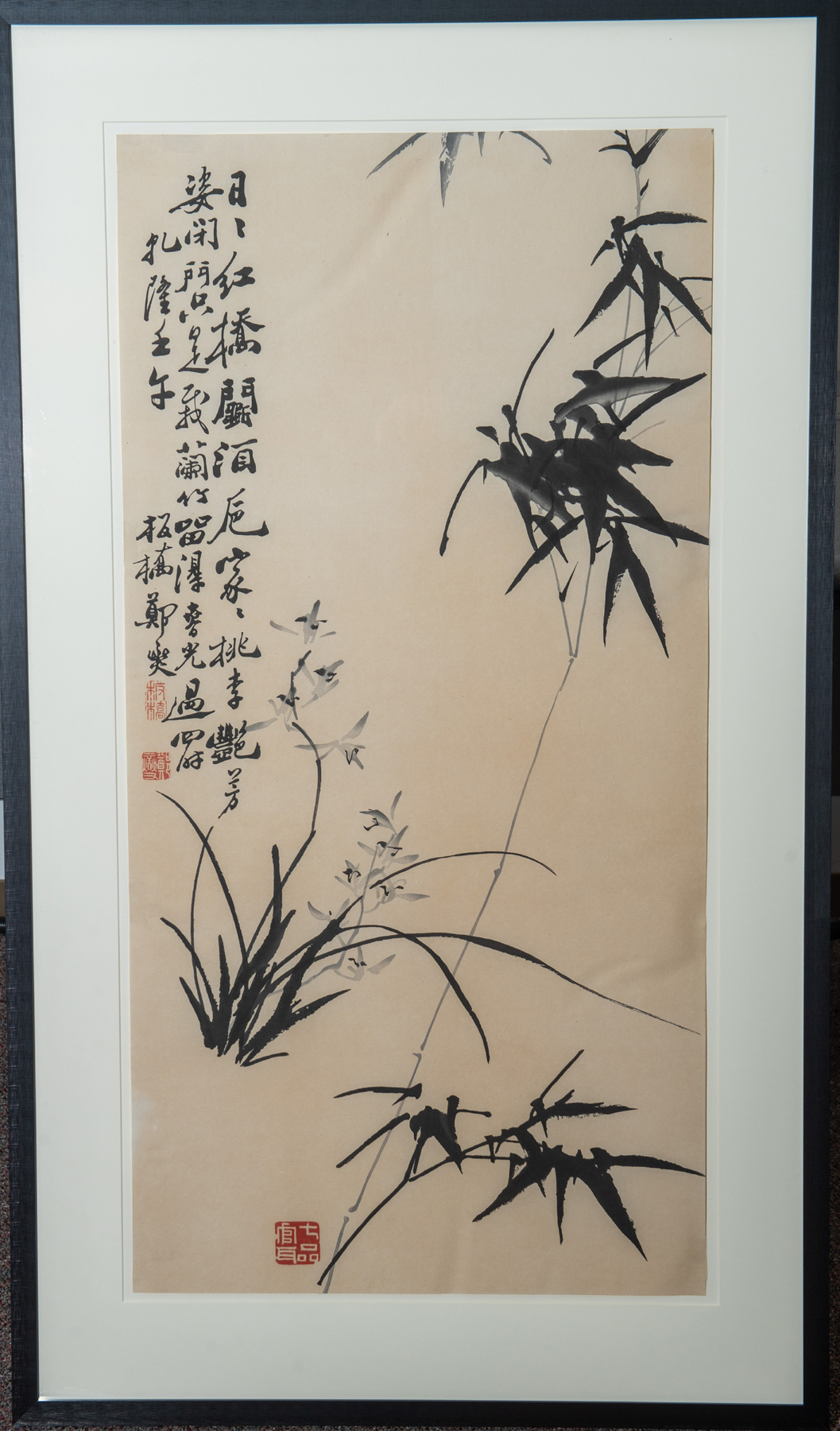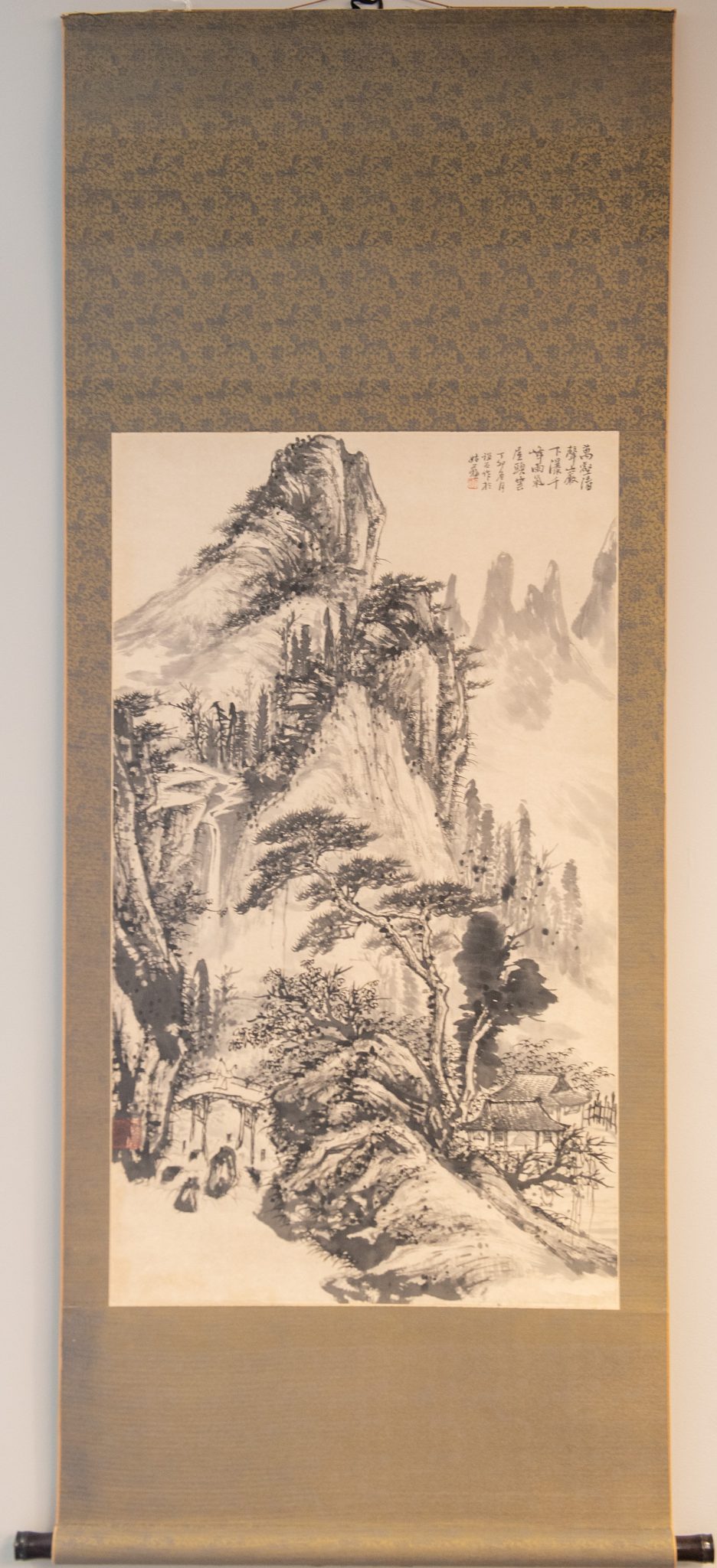Calligraphy on Chinese Artwork Translated by Wesleyan Students
April 22, 2022
BLOOMINGTON, Ill. — Ancient-style Chinese calligraphy on artwork in the Illinois Wesleyan art collection has been translated by current Titan students.
Under the guidance of Professor of History Tom Lutze, students Dawn Mengheng Wang ' 22, Esther Siqi Yang ' 23 and Amber Ruofei Shuang ' 25 translated the Chinese calligraphy on eight artworks donated by alumnus Mark Sheldon ' 70. The works include five scrolls and three framed pieces. Two of these works include poems.
Sheldon was gifted or bought many works of Chinese art during his 40-plus year career at

the Chinese University of Hong Kong, where he worked for the Yale-China Association. For Sheldon, the pieces’ value lies not in their monetary worth, but in their heritage.
“My whole wish is for there to be an appreciation of a different aesthetic,” Sheldon said.
According to Sheldon, in order to appreciate the Asian aesthetic in these artworks, one must be able to see that “often what is not painted is as important as what is painted.” The mountains and clouds featured in this style of art allow a viewer to “feel a different sense of space and form,” Sheldon said.
Sheldon serves as a volunteer admissions advisor for students in Asia seeking to study at Illinois Wesleyan University. This past year, Amber Ruofei Shuang ’25, one of his advisees from Beijing, China, helped translate calligraphy on the pieces he had donated.
University Archivist Meg Miner initiated the translation process by approaching Professor of History Tom Lutze, whose work as a historian of modern China is based on translating primary sources from Chinese into English.
“Translating poetry written in stylized calligraphy is a different kettle of fish altogether. I turned the main translating task over to native speakers – including two of our international students, Dawn Wang and Esther Yang – to convey the nuance and literary context of the writings,” said Lutze.
Wang, who is from Shaanxi, China, broke the translation process down into three steps: first, to recognize the calligraphy and seals in the paintings; second, to translate ancient-style Chinese into modern Chinese; and finally, to translate Chinese into English.
Wang said the hardest part proved to be translating the ancient Chinese symbols into modern ones.
Wang’s father, who is a Professor of Modern Chinese Philosophy and History at Shaanxi Normal University in Xi'an, China , assisted the students in identifying the ancient calligraphy. According to Wang, the translation process can be “dizzying,” but her father was not deterred.
“He has a certain degree of calligraphy practice and only (needed) a Sunday to record all the information,” Wang said.
In addition to the translation project, the artwork was evaluated and preserved for proper display.
About three years ago, Sheldon reached out to Miner on the status of the artworks which were in storage. Nothing had been done to display them previously, but according to Sheldon, “Meg was the savior.”
Miner sent the works to be evaluated at the Stratis Fine Art Conservation studio in Chicago where one of the six scrolls, “Bamboo and Orchid,” was placed on protective matting due to the fragility of its backing. The other five scrolls were deemed fit for display and a safe storage system was devised for their preservation when not on display.
Physical Plant staff Roy Bailey and Randy Crow installed a special protective mounting system which displays two of the five scrolls outside of the Social Justice & Diversity Room and the Ford Instruction Lab on The Ames Library’s entry level. The scrolls will rotate behind the display screens every six months.
Plaques with the student translations now accompany the two scrolls currently on display in The Ames Library. A plaque also accompanies a painting of “Huang Shan,” or the sacred mountain of China, in the basement of Evelyn Chapel. Sheldon gifted this painting to previous Associate Dean of Students and University Chaplain Elyse Nelson Winger.
Plaques are currently in the process of being added to two of the framed artworks on display on the third floor of CLA.

An English translation of one of these poems reads:
“The waterfall cascades down from the rock,
the timbre of pine needles blends with the tenor of water – a chorus of nature.
The mountain rain gathers into clouds,
the billows envelop the house where the hermit lives.”
“I feel really proud that I can use my knowledge to translate Chinese traditional arts to English and let more people appreciate them,” Yang said.
Lutze said the paintings will serve as a reminder of Wesleyan’s liberal arts traditions
and history of connections with Asia.
“They will also hang as expressions of cultural respect and inclusion for members of our community who come from Asian backgrounds,” he said. “And, of course, they will hang as representations of the beauty and form of Chinese art, affording a new opportunity for engagement and appreciation.”
By Maria Harmon '23